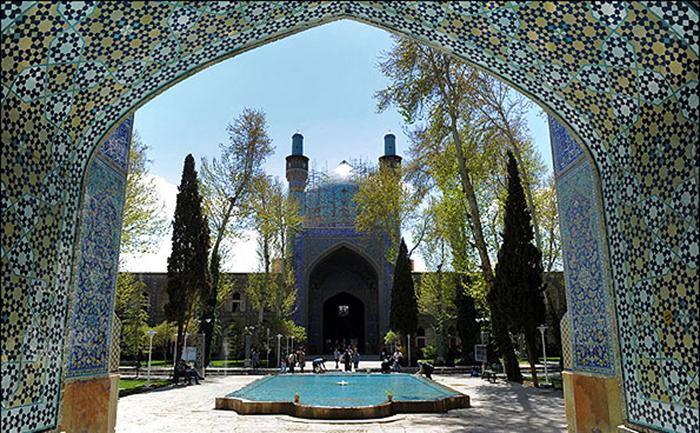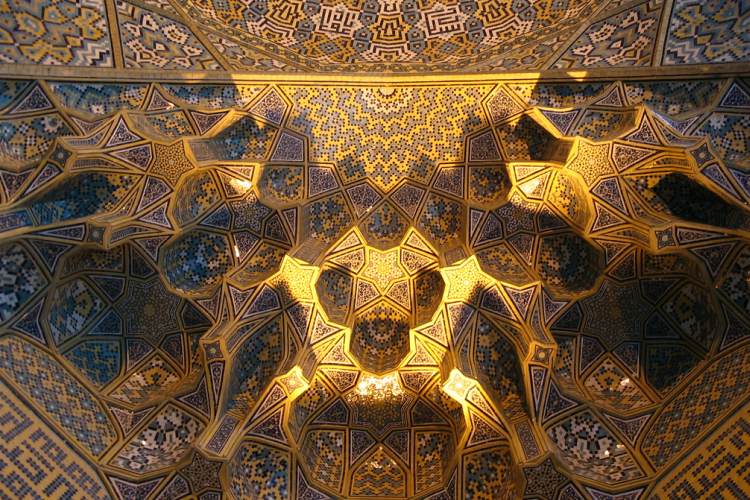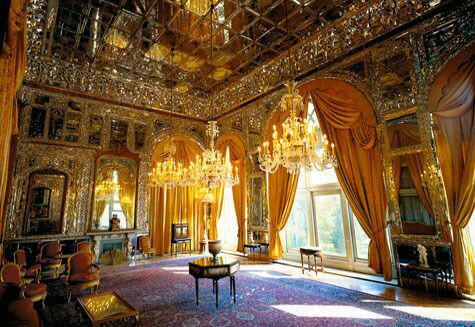 جاذبه : Golestan Palace
جاذبه : Golestan Palace
مشخصات جاذبه
جاذبه::Golestan Palace
نام کشور::Iran
نام شهر::Tehran
نوع جاذبه ::Ancient and Historical
نوع جاذبه فرعی:: Historical
زمان بازدید:: 00:00:00
بلیط:: 25000
بلیط خارجی:: 150000
توضیحات:: The glorious Golestan Palace in Tehran is a masterpiece of Qajar dynasty that depicts the creative integration of Iranian architecture with western influences. Qajar family came to power in 1779 and since then, Tehran was chosen as the capital of their power and the palace was the seat of their government. This palace was built around a garden with picturesque planted areas and a beautiful pool. When you walk into the courtyard, the first thing you see is Takht-e Marmar Terrace. The terrace is ornamented with Iranian elements like mirrors, stuccos, paintings and tile works. There is also a yellow marble throne that came from Yazd. On the right side of the terrace, there is another terrace where Naser al-Din Shah reclined and smoked while enjoying the green surroundings. The integration of Iranian and European architecture is best clear in Shamsol Emare, where the king wanted to have a clear view of the capital, therefore; he got a tower built for him. Though, only its ground floor has remained. There is a theater right on the southern part of Shamsol Emare. It was constructed upon the order of the Qajar king for performing Ta’zieh (Islamic mourning performance). This architectural phenomenon with all of its vibrant and colorful figures and monuments has been registered on UNESCO World Heritage list on 2013.
کلیات
جاذبه::Golestan Palace
وجه تسمیه::It's named after the Golestan Hall loacted at the exterior mansion.
سازنده ::Its first founder was the Safavid Shah Tahmasb I, after whom other kings at different times added other sections to it.
اقلام فروشی:: Its first founder was the Safavid Shah Tahmasb I, after whom other kings at different times added other sections to it.
امکانات
پیشنهادات
جاذبه::Golestan Palace
بخش های مهم برای بازدید:: All the mansions and museums of this palace
مسیر دسترسی
جاذبه::Golestan Palace
وب سایت ::www.golestanpalace.ir
عکس

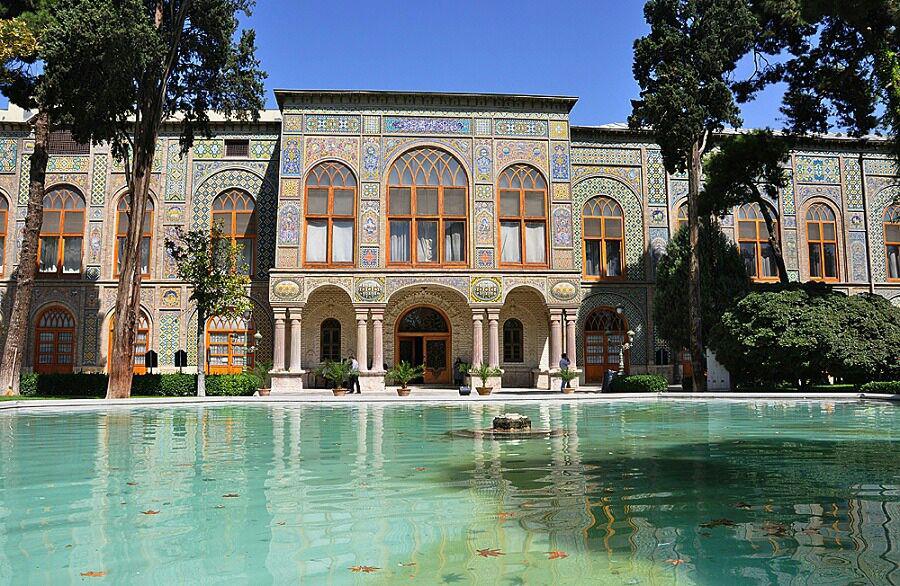
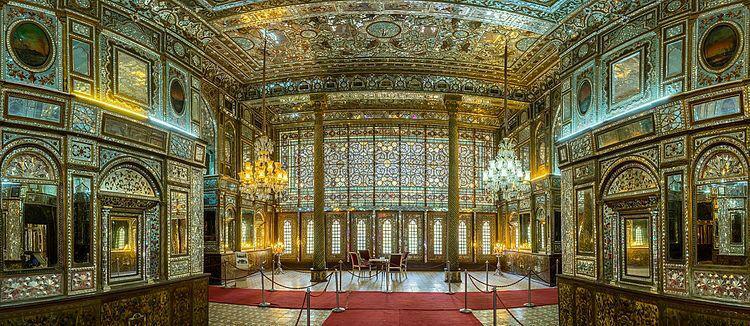
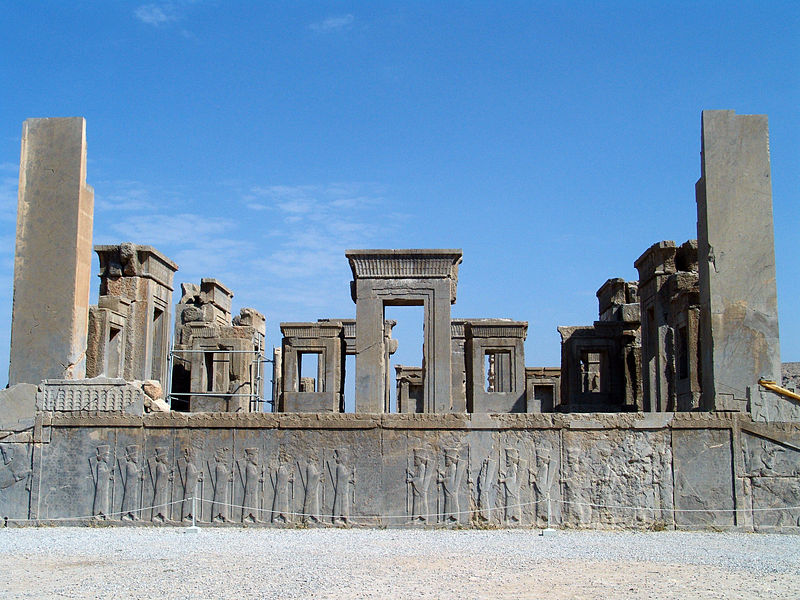 جاذبه : Persepolis
جاذبه : Persepolis
مشخصات جاذبه
جاذبه::Persepolis
نام کشور::Iran
نام شهر::Tehran
نوع جاذبه ::Ancient and Historical
نوع جاذبه فرعی:: Historical
زمان بازدید:: 08:00:00
تعطیلی هفته:: ندارد
تعطیلی سالیانه:: 9 و10 محرم، 28 صفر، 21 رمضان، 25 شوال، 14 خرداد
بلیط:: 50000
بلیط خارجی:: 500000
راهنمای محلی:: ۰۹۱۷۵۳۱۳۶۸۴
توضیحات:: Takht-e-Jamshid or Parseh (Persopolis) is one of the ancient cities of Iran that was the magnificent ceremonial capital of Iranian Kingdom for successive years in Achaemenid Empire. There is a palace called Persepolis in this ancient city where was built in the reign of Darius the Great, Xerxes I, and Artaxerxes I, and was intact for 200 years. On the first days of the New Year, many groups from different countries would gather in Persepolis in behalf of Satraps with a variety of offers and bestow their gifts to the king. In 518 BC, the construction of Persepolis, as the new capital of Achaemenids, started in Parseh. Darius the Great was the founder of Takht-e-Jamshid. After him, his son, Xerxes I, and his grandson, Artaxerxes I, expanded it. Much of the information about the background of Achaemenids and their culture come from the inscriptions on stone and metal found on the walls and tablets of these palaces. Historians believe that Alexander III of Macedon, the Greek king, attacked Iran in 330 BC, fired Persepolis, and probably destroyed most of the Achaemenid inscriptions, culture, and art. However, the ruins of this place are still there and archeologists have confirmed the signs of fire and attacks in it. This monument was registered in UNESCO World Heritage in 1979.
کلیات
جاذبه::Persepolis
قدمت:: Achaemenid Empire
سازنده ::Darius, Xerxes and Artaxerxes
ویژگی خاص:: Power Icon of the Achaemenid Empire
امکانات
پیشنهادات
جاذبه::Persepolis
بهترین زمان بازدید::In the cool of the early morning
مدت زمان بازدید::02:00
بخش های مهم برای بازدید:: All Sections
نزدیک ترین جاذبه گردشگری:: Achaemenid Museum, Naqsh-e Rustam
مسیر دسترسی
جاذبه::Persepolis
عکس

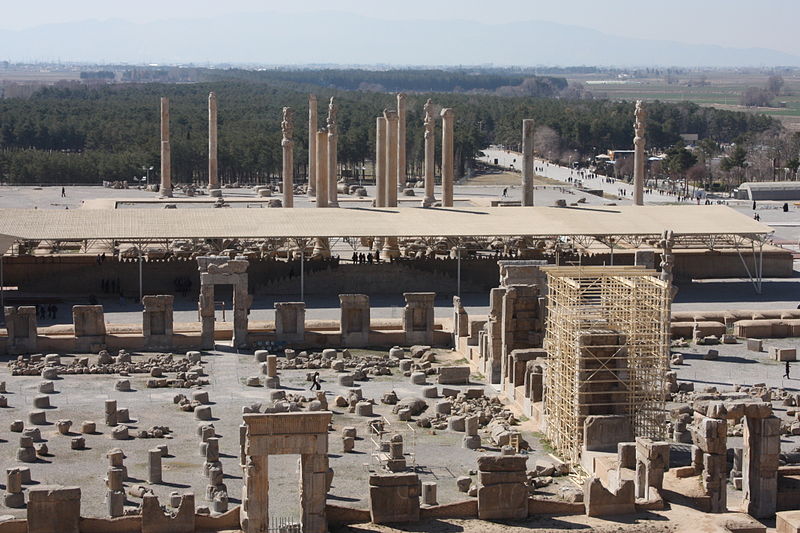
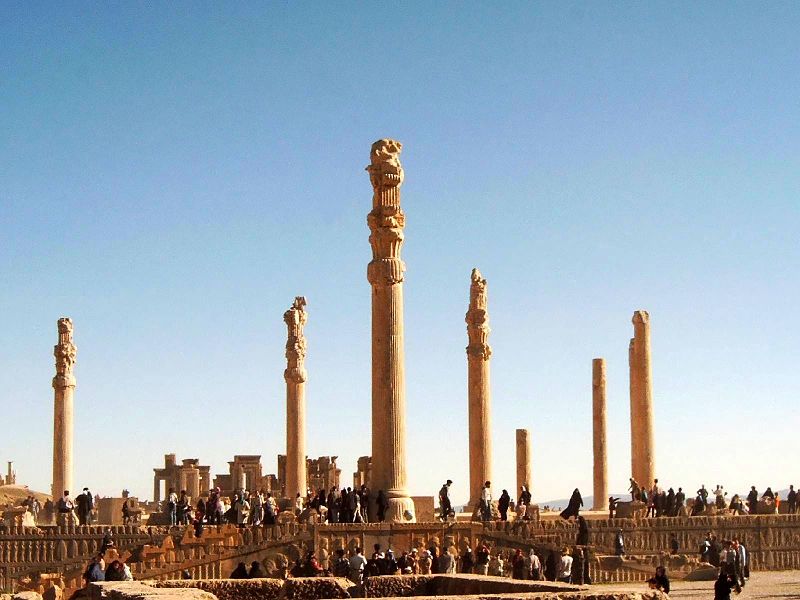
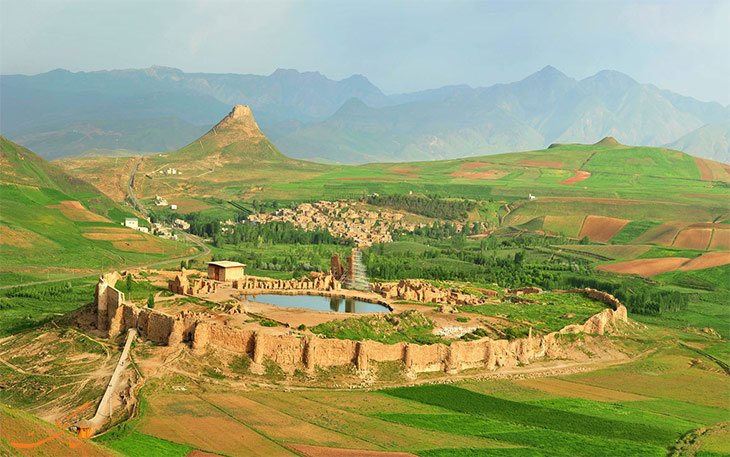 جاذبه : Takht-e Soleyman
جاذبه : Takht-e Soleyman
مشخصات جاذبه
جاذبه::Takht-e Soleyman
نام کشور::Iran
نام شهر::West Azerbaijan
نوع جاذبه ::Ancient and Historical
نوع جاذبه فرعی:: Historical
زمان بازدید:: 00:00:00
بلیط:: 30000
بلیط خارجی:: 200000
توضیحات:: (also known as Azar Goshnasp Fire Temple) is the name of a large historical area near Takab and Takht-e Soleyman village (previously known as Nosratabad) located in West Azerbaijan Province, 45 kilometers northeast of Takab. Takht-e Soleyman is an ancient area consisting of some Sasanid palaces and Azar Goshnasp fire temple. Near this area, there are two other ancient complexes named Zendane-e Soleyman (Prison of Solomon) and Takht-e Bilkis. Some evidence of Medes and Schytians has been found around Zendan-e Soleyman which prove that this area dates back to 1000 years before Christ. Some historians call this area "Shiz Ancient City". Shiz has been accepted by UNESCO as the world heritage, and it is going to be reconstructed in the near future. In recent years, during research on Paleolithic Era, two ancient areas were discovered in takht-e Soleyman. Also, Chal Tappeh, the temporary residence in Middle Paleolithic Era, and Chaqmaq Li area with some evidence of tool-making has been discovered in this area. The oldest pre-Islam discovered remains of Takht-e Soleyman world heritage complex belong to Paleolithic, and Chalcolithic Eras, Iron Age 1, 2, and 3, and Sasanid historical period. Although the area is called Takht-e Soleyman, it had various names such as Ganzak, Ganjeh, Ganjak, Gazka, and Shiz in the past. It was known as Takht-e Soleyman in Safavid period.
کلیات
جاذبه::Takht-e Soleyman
وجه تسمیه::Azar Goshnasp, literally means "the Fire of the Warrior Kings".
سازنده ::According to Avesta, Kai Khosrow, the son of Siavash is its founder.
اقلام فروشی:: According to Avesta, Kai Khosrow, the son of Siavash is its founder.
ویژگی خاص:: Azar Goshnasp fire temple was one of the three important Sassanid fire temples.
امکانات
پیشنهادات
جاذبه::Takht-e Soleyman
بهترین زمان بازدید::Spring
بخش های مهم برای بازدید:: Fire temple and Anahita temple
نزدیک ترین جاذبه گردشگری:: Zendane Soleyman (Solomon's prison), Bilkis mounta...
مسیر دسترسی
جاذبه::Takht-e Soleyman
نحوه دسترسی::By personal vehicle or taxi
عکس


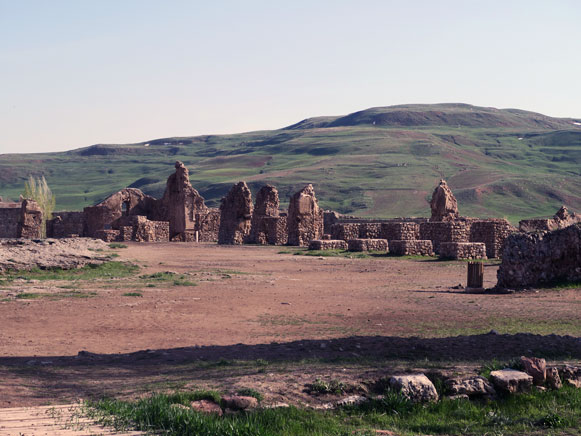
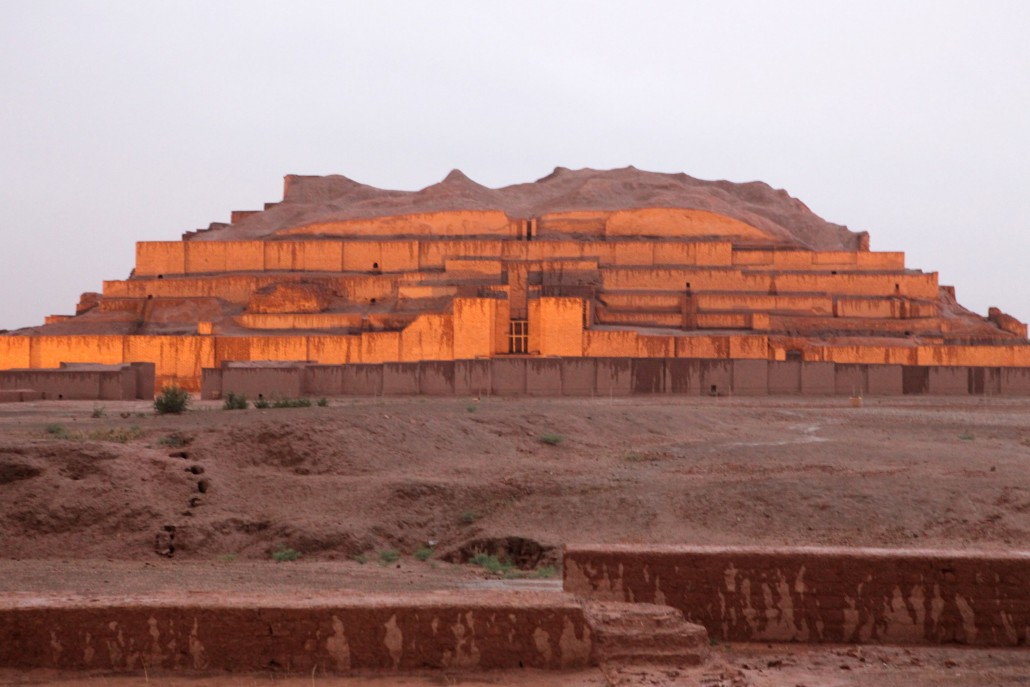 جاذبه : Chogha Zanbil Ziggurat
جاذبه : Chogha Zanbil Ziggurat
مشخصات جاذبه
جاذبه::Chogha Zanbil Ziggurat
نام کشور::Iran
نام شهر:: Khuzestan
نوع جاذبه ::Ancient and Historical
نوع جاذبه فرعی:: Historical
آدرس:: Near Haft Tepe site, 40 kilometers from Shush and 35 kilometers from Shushtar, Khuzestan, Iran
زمان بازدید:: 08:00:00
تعطیلی هفته:: ندارد
تعطیلی سالیانه:: روزهای تاسوعا و عاشورای حسینی، ۲۱ رمضان شهادت امام علی، ۲۸ صفر رحلت پیامبر، ۱۴ خرداد رحلت امام خمینی، ۲۵ شوال شهادت امام جعفر صادق
بلیط:: 50.000
بلیط خارجی:: 500.000
راهنمای محلی:: راهنمای محلی آقای کعبی: 09383464934
توضیحات:: Chogha Zanbil is an ancient temple belonging to Elam civilization that ruled 3500 BC. Chogha Zanbil is remained from Dur Untash City (Town of Untash), and it is located near Susa (ancient city) in Khuzestan Province. This monument lies in Khuzestan Province, southeast of Susa. It was constructed in 1250 BC by Untash-Napirisha, the great king of Elam, mainly to honor the great god Inshushinak, the Susa’s guard. The monument, along with Elam Civilization, was destroyed during Assyrian Ashurbanipal’s attack an hidden under the ground until the contemporary period when Roman Ghirshman, the French archeologist who specialized in ancient Iran, excavated it. It was initially 52 meters high and consisted of 5floors. Today, it is 25 meters high and only to and a half floors of it have remained. Chogha Zanbil’s infrastructure was a 105 105 sqaure, i.e. twice as big as a soccer field. This structure is the first historical monument in Iran that was registered in UNESCO World Heritage in 1979. The world appreciates Chogha Zanbil as a valuable monument. Orientalists consider Chogha Zanbil as the first religious building in Iran. It is the biggest ziggurat in the world.
کلیات
جاذبه::Chogha Zanbil Ziggurat
وجه تسمیه::Among the archeologists this place is known as "Dur Untash" which may mean the fortress of untash. In Turkish "Duran Tash" means "Standing Stone".
ویژگی خاص:: The world's largest ziggurat
امکانات
پیشنهادات
جاذبه::Chogha Zanbil Ziggurat
بهترین زمان بازدید::Morning or evening. Try to avoid the hot hours of the day to visit.
مسیر دسترسی
جاذبه::Chogha Zanbil Ziggurat
آدرس::Near Haft Tepe site, 40 kilometers from Shush and 35 kilometers from Shushtar, Khuzestan, Iran
عکس

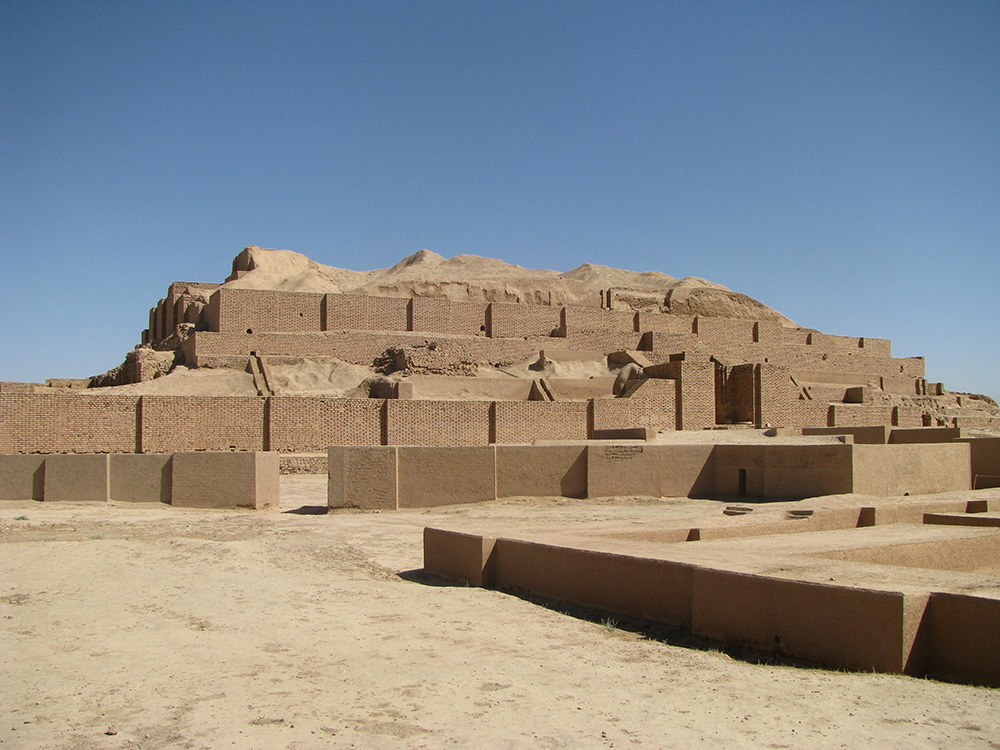
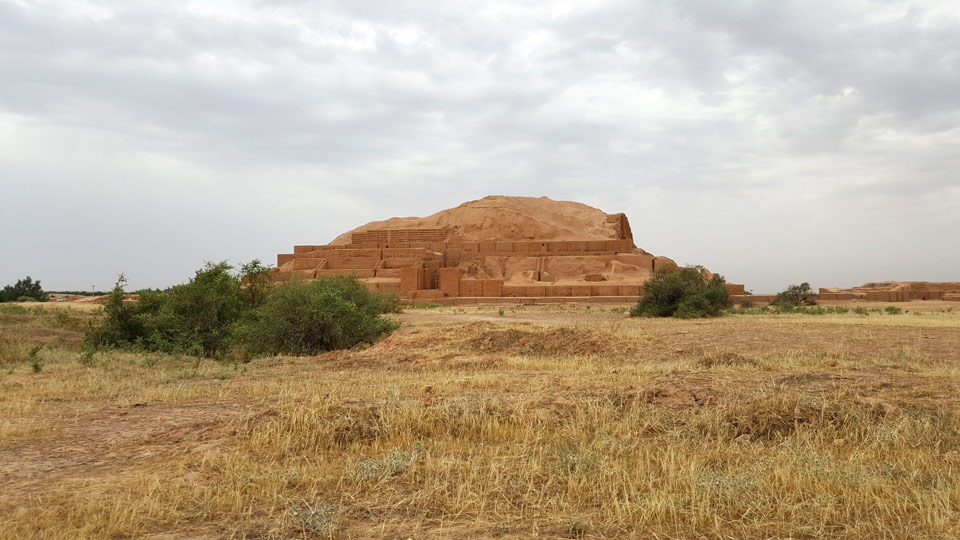
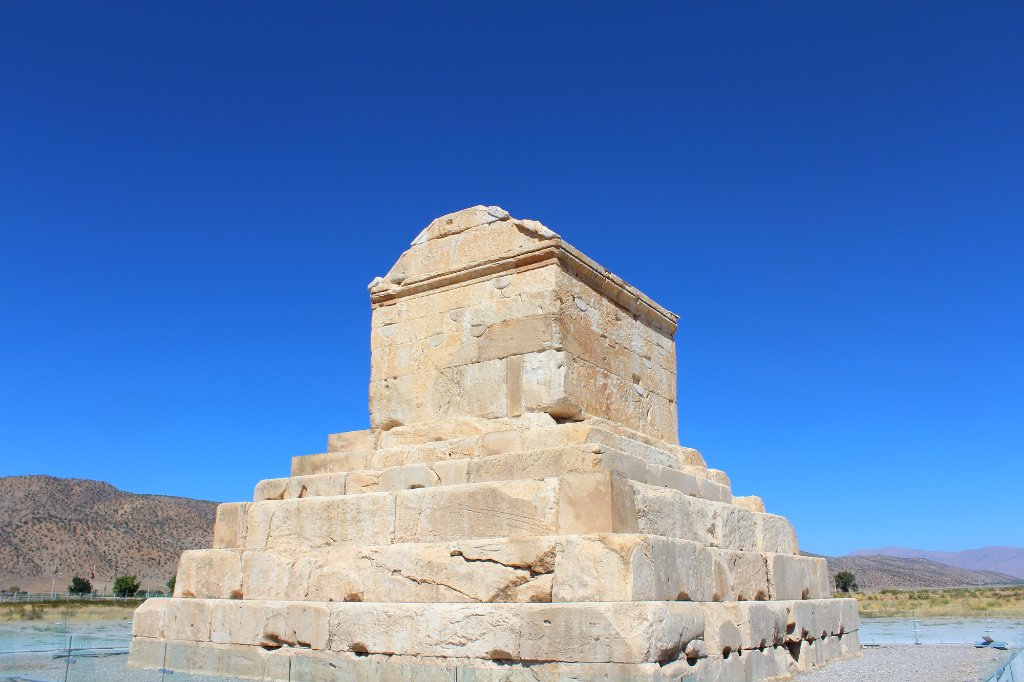 جاذبه : Pasargadae
جاذبه : Pasargadae
مشخصات جاذبه
جاذبه::Pasargadae
نام کشور::Iran
نام شهر::shiraz
نوع جاذبه ::Ancient and Historical
نوع جاذبه فرعی:: Historical
آدرس:: Fars, pasargad
زمان بازدید:: 07:30:00
تعطیلی هفته:: ندارد
تعطیلی سالیانه:: روزهای تاسوعا و عاشورای حسینی، 21 رمضان شهادت امام علی ، 28 صفر رحلت پیامبر ، 14 خرداد رحلت امام خمینی ، 25 شوال شهادت امام جعفر صادق
بلیط:: 30000
بلیط خارجی:: 200.000
توضیحات:: Pasargadae The Pasargadae World Heritage Site is one of the ancient remains of the Achaemenid era, located in Pasargad, Fars province. The Great Cyrus established the Iranian government, Achaemenid, in 550 BC, and chose Pasargadae as its first capital, a large plain that was irrigated by the Polvar River. Pasargadae was the capital of the first great multicultural empire in Western Asia. Spanning the Eastern Mediterranean and Egypt to the Hindus River, it is considered to be the first empire that respected the cultural diversity of its different peoples. This was reflected in Achaemenid architecture, a synthetic representation of different cultures. Pasargadae is a certificate of Achaemenid architecture and mixing of different cultures. Its palaces, gardens and the mausoleum of Cyrus are outstanding examples of this area. Its Royal Garden, "Four Gardens", became a model for architecture and design in Western Asia. Tall-e Takht, a fortified terrace; and a royal ensemble of gatehouse, audience hall, residential palace and gardens are the other parts in this area. This valuable collection was recorded in UNESCO World Heritage on July 16, 2004.
کلیات
جاذبه::Pasargadae
سازنده ::It founded by Cyrus II the Great
ویژگی خاص:: Pasargadae was the capital of the first great multicultural empire in Western Asia.
امکانات
پیشنهادات
جاذبه::Pasargadae
بهترین زمان بازدید::(Norooz holidays (Iranian new year
بخش های مهم برای بازدید:: The mausoleum of Cyrus, Tall-e Takht, a fortified terrace; and a royal ensemble of gatehouse, audience hall, residential palace,...
مسیر دسترسی
جاذبه::Pasargadae
آدرس::Fars, pasargad
عکس

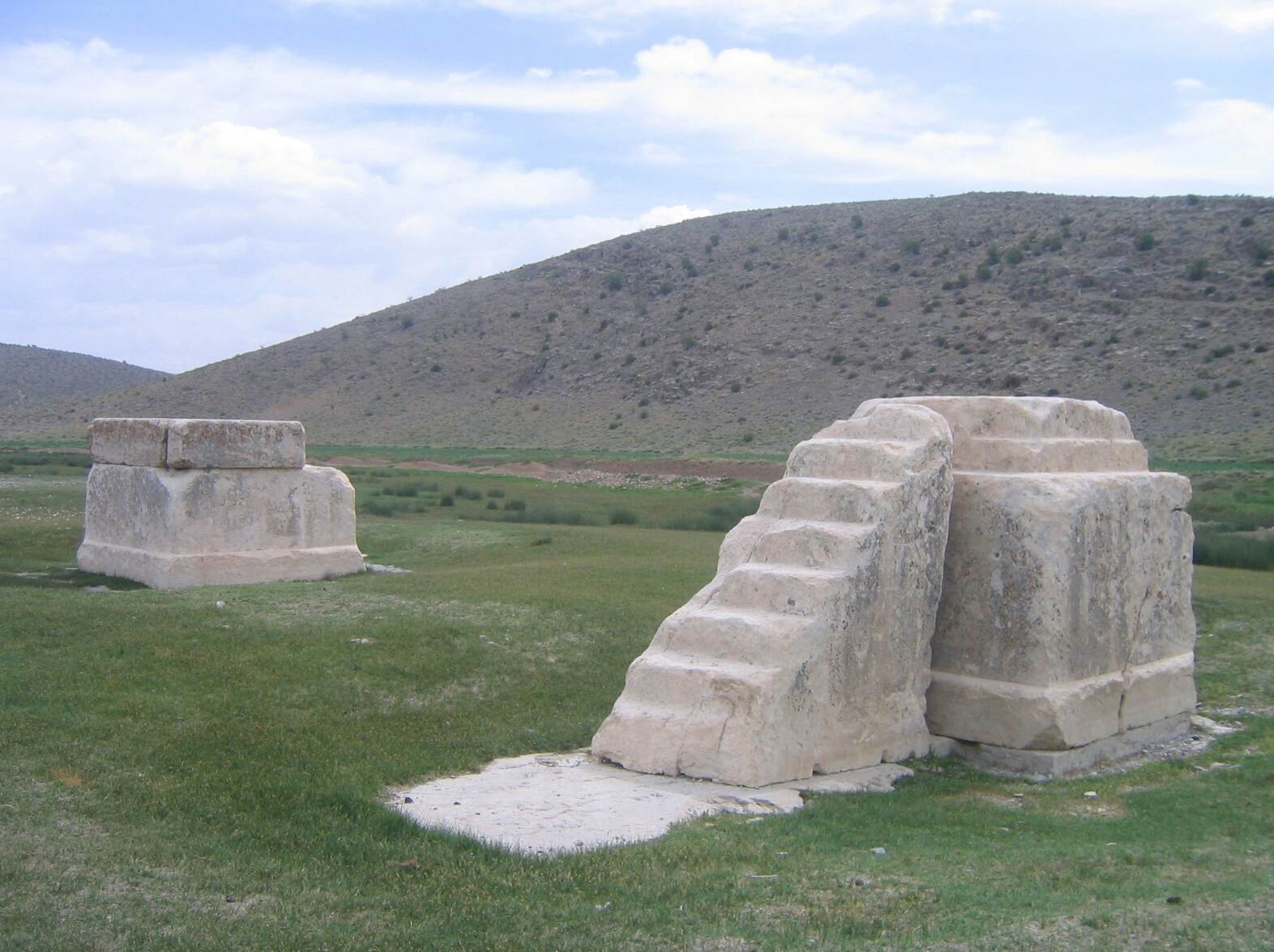
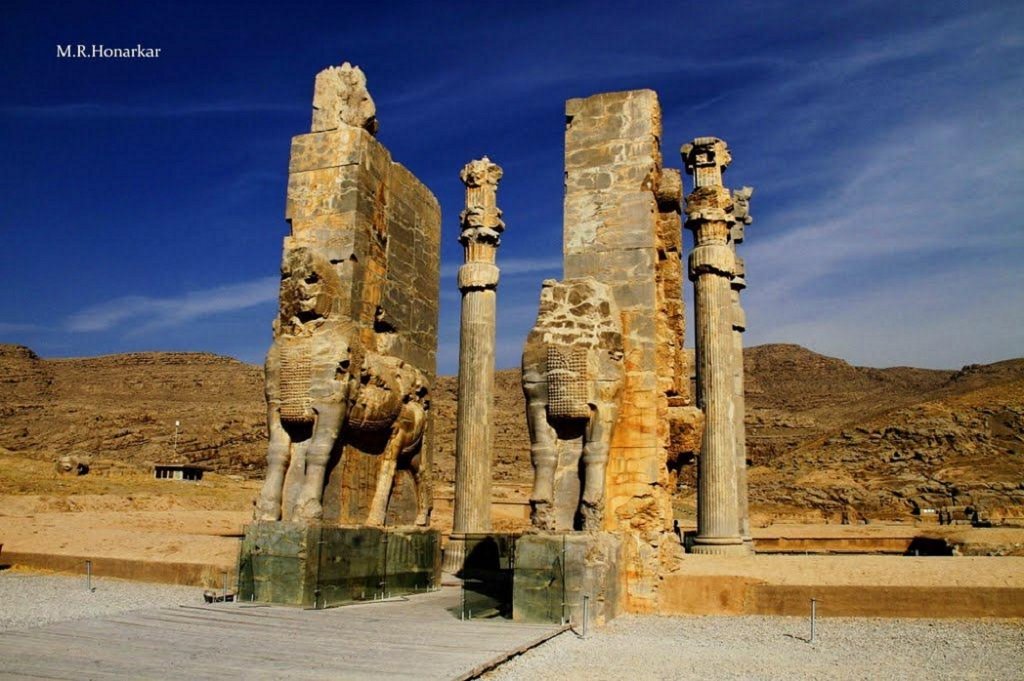
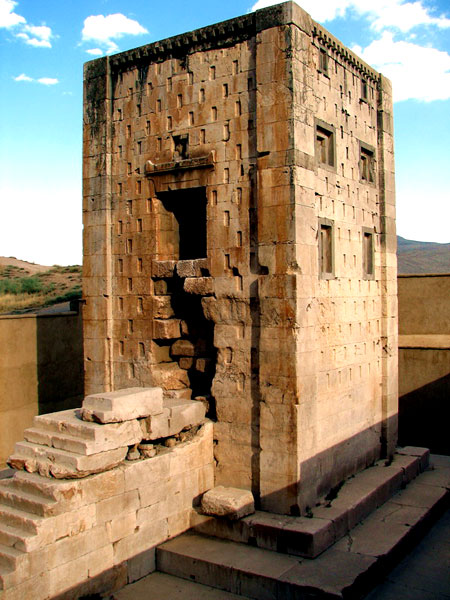 جاذبه : Naqsh-e Rustam
جاذبه : Naqsh-e Rustam
مشخصات جاذبه
جاذبه::Naqsh-e Rustam
نام کشور::Iran
نام شهر::shiraz
نوع جاذبه ::Ancient and Historical
نوع جاذبه فرعی:: Historical
آدرس:: Zangiabad village, north of Marvdasht, 6 kilometers from persepolis, Fars province, Iran
زمان بازدید:: 08:00:00
تعطیلی هفته:: ندارد
تعطیلی سالیانه:: 9 و10 محرم، 28 صفر، 21 رمضان، 25 شوال، 14 خرداد
بلیط:: 30000
بلیط خارجی:: 200000
توضیحات:: Naqsh-e Rustam is an ancient complex in Zangi Abad Village located in the north of Marvdasht County, Fars Province. It stands 6 kilometers from Persepolis. This ancient area contains Elam, Achaemenid, and Sassanid remains. It was of high significance from 1200 BC to 625 AD because the tombs of four Achaemenid kings, several reliefs from the important events of Sassanid period, the Cube of Zoroaster, and a ruined relief from Elam period exist in this place. In Sassanid era, Naqsh-e Rustam Complex was religiously and nationally important as well. The oldest relief in Naqsh-e Rustam belongs to Elam period that displays the relief of a god and goddess and a king and queen. But, Bahram II removed some parts of it later in Sassanid period and carved his court instead. The Cube of Zoroaster is a tower-like stone monument in the area which was most probably built in Achaemenid period and its function is already unknown. There are two inscriptions from Shapur I and Kartir on three corners of the Cube which are historically valuable. Four crypt-like tombs have been built in the heart of mountain, which belong to Darius the Great, Xerxes, Artaxerxes I, and Darius II, and all of them have the same features. Ardashir I was the first one who carved a petroglyph in this place and registered the scene of his taking the crown from Ahura Mazda. After him, Sassanid kings also carved the scenes of their coronation or description of their wars and honors on the mountain. The fact that Ardashir
کلیات
جاذبه::Naqsh-e Rustam
سازنده ::Elamites, Achaemenids, and Sassanids
امکانات
پیشنهادات
جاذبه::Naqsh-e Rustam
بخش های مهم برای بازدید:: All Sassanid and Achaemenid petroglyphs, tombs of the Achaemenid kings, Cube of Zoroaster
نزدیک ترین جاذبه گردشگری:: Persepolis
مسیر دسترسی
جاذبه::Naqsh-e Rustam
آدرس::Zangiabad village, north of Marvdasht, 6 kilometers from persepolis, Fars province, Iran
عکس


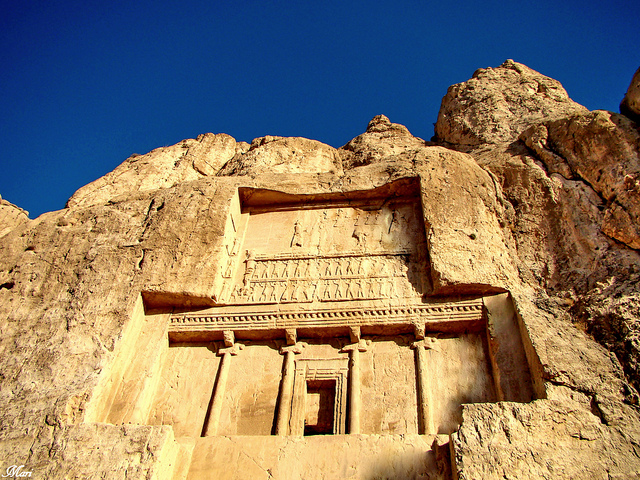
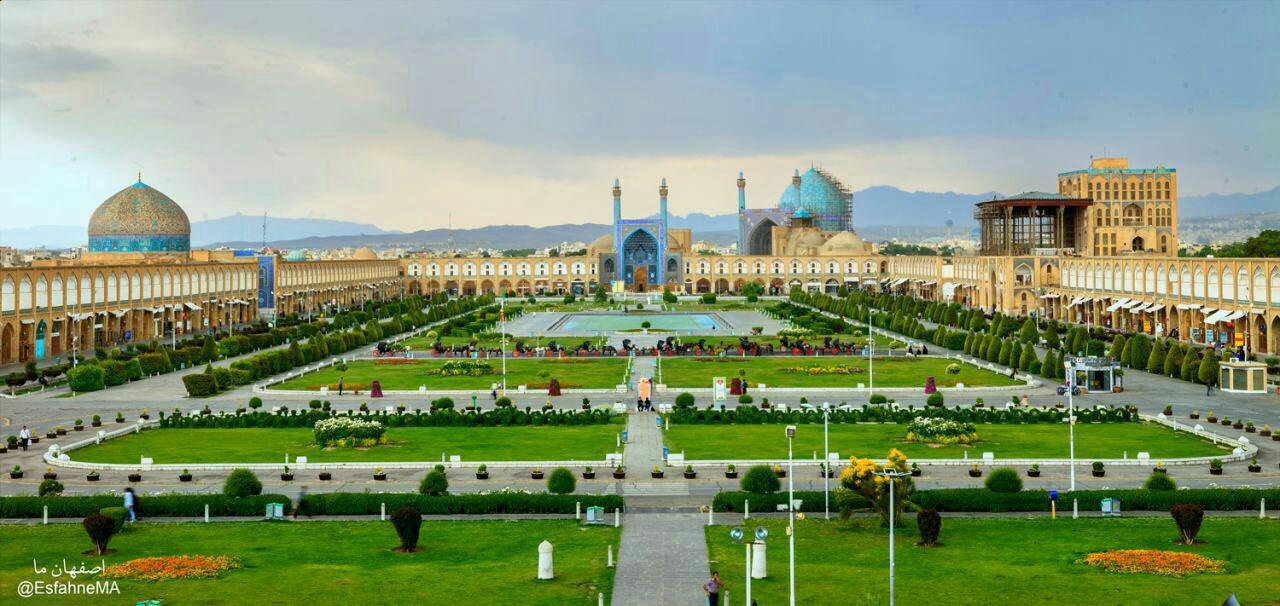 جاذبه : Naqsh-e Jahan Square
جاذبه : Naqsh-e Jahan Square
مشخصات جاذبه
جاذبه::Naqsh-e Jahan Square
نام کشور::Iran
نام شهر::Isfahan
نوع جاذبه ::Ancient and Historical
نوع جاذبه فرعی:: Historical
زمان بازدید:: 00:00:00
تعطیلی هفته:: مسجد امام در روزهای جمعه،و مسجد شیخ لطف الله هر روز در مواقع نماز ظهر تعطیل است.
تعطیلی سالیانه:: تمام بناهای تاریخی میدان نقش جهان در ایام سوگواری تعطیل هستند.
بلیط:: 0
بلیط خارجی:: 0
توضیحات:: Naghsh-e-Jahan Square is a huge rectangular square in Isfahan, Iran, which is surrounded by monuments from Safavid period. Naghsh-e-Jahan Square was built during the reign of Safavid Shah Abbas. There are other historical monuments in the square including Ali Qapu Palace, Imam Mosque, Sheikh Lotf Allah Mosque, Qeisarieh Gate. In addition to these monuments, there are 200 chambers around the square, in which Isfahan's handicrafts are presented. In comparison with "Place de la Concorde" in Paris, Naghsh-e-jahan Square is historically superior, and after "Tiananmen Square" in Beijing, it is the second largest square in the world. Due to the harmony existing in the construction of it, Naghsh-e-Jahan Square has surprised Europeans during centuries. The square was registered in Iran's National Heritage on January 28, 1935 under the registration number of 102. Also, it was among the first Iranian monuments, which was registered in UNESCO World Heritage in April, 1979 under the registration number of 115. The square was named "Shah Square" after it was built, and it was registered in World Heritage list under this name. Currently, however, it is known as "Imam Square" in that list.
کلیات
جاذبه::Naqsh-e Jahan Square
بازسازی:: Eversince the reign of Reza Shah until now the restoration and repair work of the buildings continue continuously.
ویژگی خاص:: Second largest square in the world after the Tiananmen square in Beijing.
امکانات
پیشنهادات
جاذبه::Naqsh-e Jahan Square
بهترین زمان بازدید::(Norooz holidays (Iranian new year
مدت زمان بازدید::02:00
بخش های مهم برای بازدید:: The historical buildings located at Naqsh-e Jahan square include Ali Qapu palace, Emam mosque, Sheikh Lotfollah mosque and Qeysarie gate
نزدیک ترین جاذبه گردشگری:: Bazaar
مسیر دسترسی
جاذبه::Naqsh-e Jahan Square
نحوه دسترسی::Taxi, bus
عکس

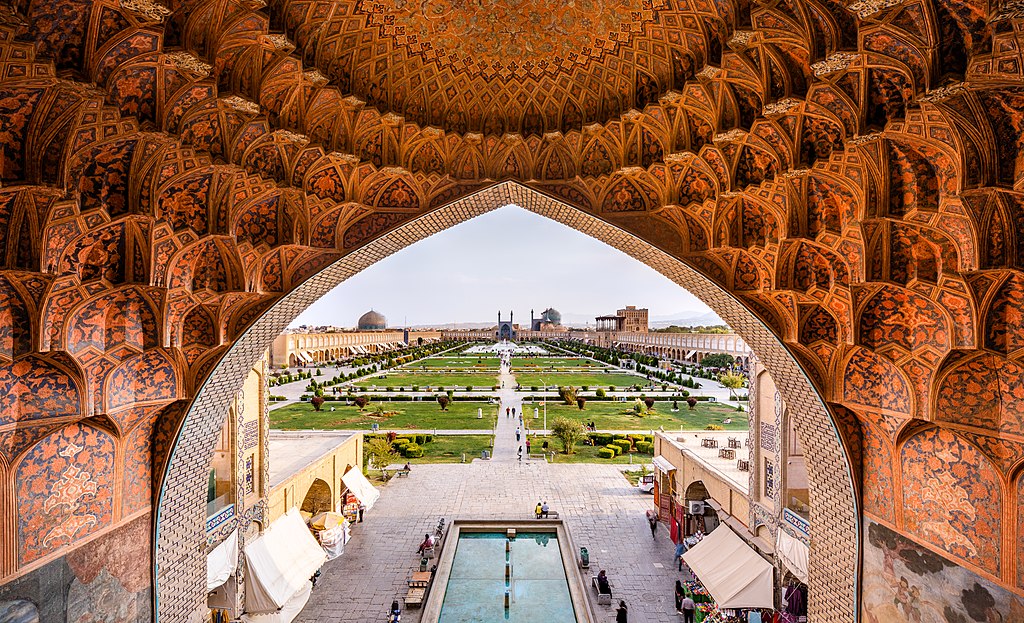
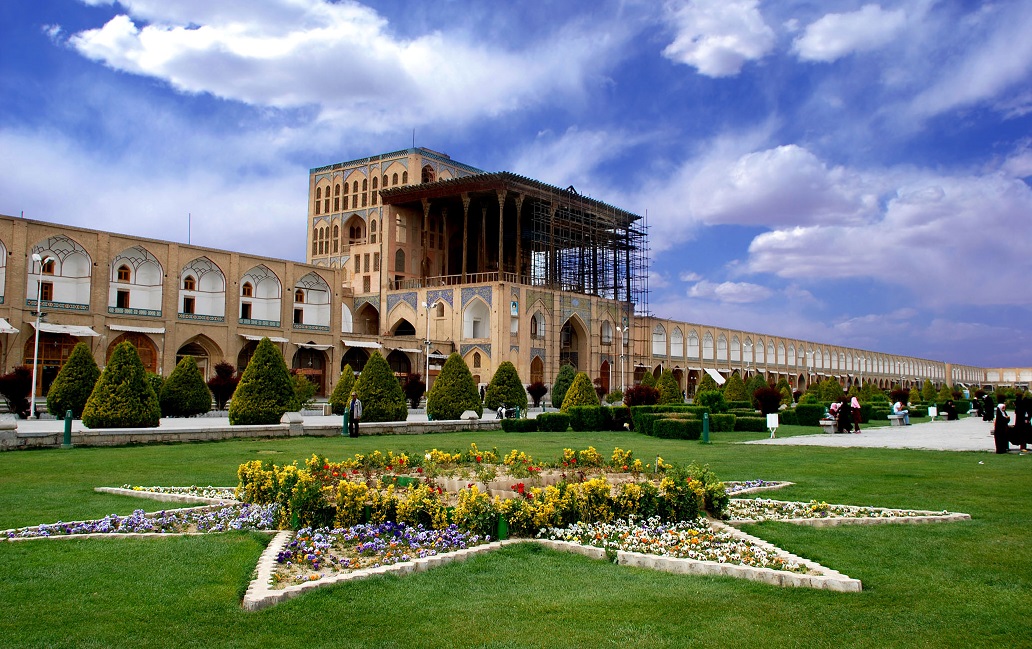
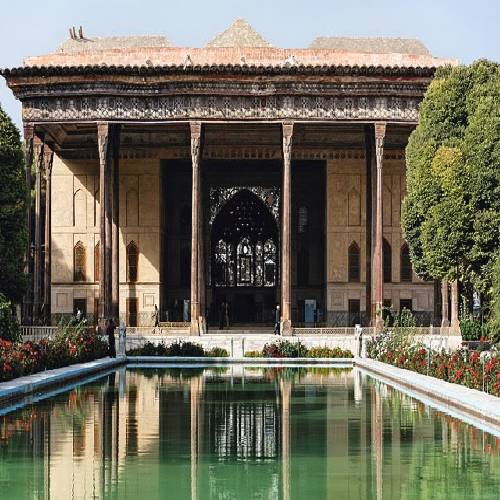 جاذبه : Chehel Sotoun Palace
جاذبه : Chehel Sotoun Palace
مشخصات جاذبه
جاذبه::Chehel Sotoun Palace
نام کشور::Iran
نام شهر::Isfahan
نوع جاذبه ::Ancient and Historical
نوع جاذبه فرعی:: Historical
آدرس:: Ostandari street, Emam Hossein square, Isfahan, Iran
زمان بازدید:: 00:00:00
تعطیلی هفته:: ندارد
تعطیلی سالیانه:: روزهای تاسوعا و عاشورای حسینی، ۲۱ رمضان شهادت امام علی، ۲۸ صفر رحلت پیامبر، ۱۴ خرداد رحلت امام خمینی، ۲۵ شوال شهادت امام جعفر صادق
بلیط:: 50.000
بلیط خارجی:: 500.000
توضیحات:: One of the urban plans of the First Safavid Shah Abbas after selecting Isfahan as his capital city was to construct the beautiful Chaharbagh Street and several gardens around it, which w designed by Sheikh Bahai in a wide area called “Dolatkhane” (State Housse). One of those monuments was a small building which Shah Abbas the First constructed in Jahan Nama Garden like a kiosk or pavilion. It was expanded in time of Shah Abbas the Second and named “Chehel Sotoun”. One of the significant features of Chehel Sotoun Palace is very beautiful murals of Reza Abbasi, an artist in Safavie era, that have ornamented the palace walls. Each of those murals demonstrate a set of historical events in Safavid and Afsharid dynasties. Artworks of this palace including mirrorwork, murals, and woodwork indicate great artistic skill of Iranian artists. Chehel Sotoun of Isfahan was internationally registered by UNESCO in 2011.
کلیات
جاذبه::Chehel Sotoun Palace
وجه تسمیه::Its named so due to the many number of pillars it has.
ویژگی خاص:: Exquisite paintings which are the works of the most renowned Iranian artist, Reza Abbasi.
امکانات
پیشنهادات
جاذبه::Chehel Sotoun Palace
بهترین زمان بازدید::Spring and Summer and early Fall
آثار و نمونه های مشابه:: Chehel Sotun palace of Qazvin, Hasht Behesht palace of Isfahan
نزدیک ترین جاذبه گردشگری:: Hasht Behesht palace, Chahar Bagh school
مسیر دسترسی
جاذبه::Chehel Sotoun Palace
آدرس::Ostandari street, Emam Hossein square, Isfahan, Iran
نحوه دسترسی::Taxi, bus
عکس

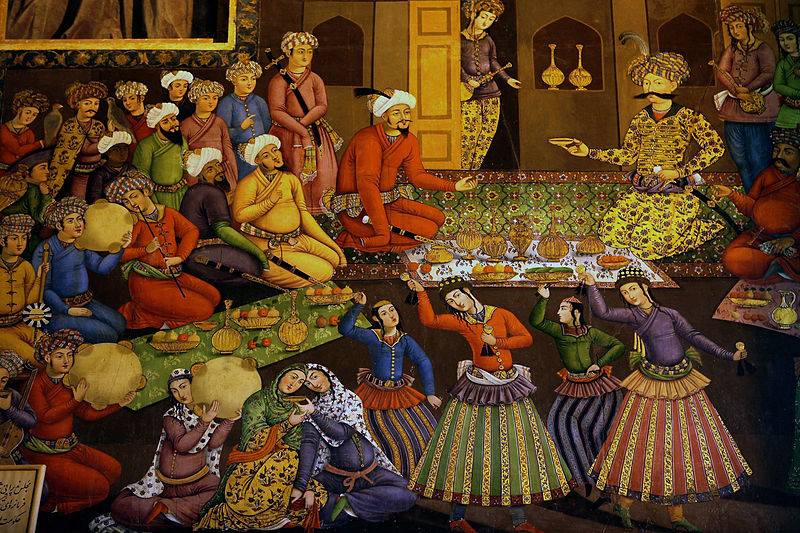
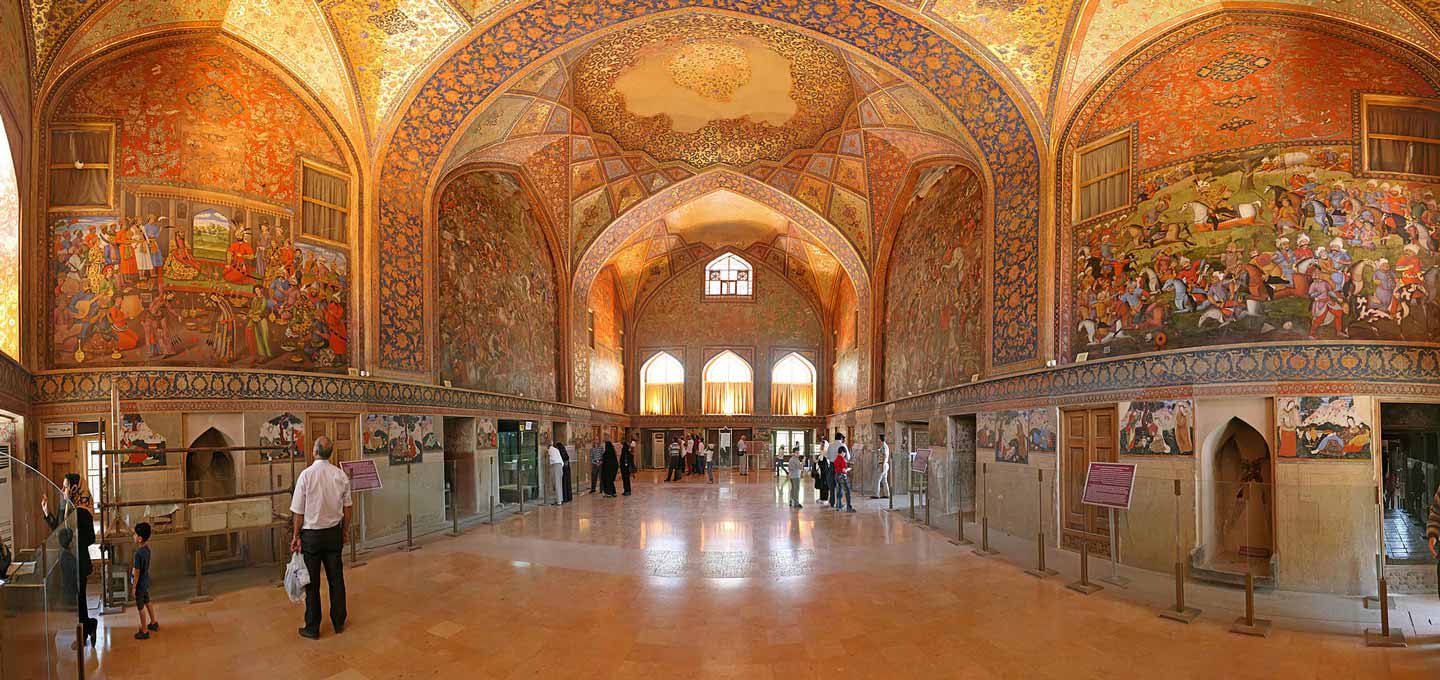
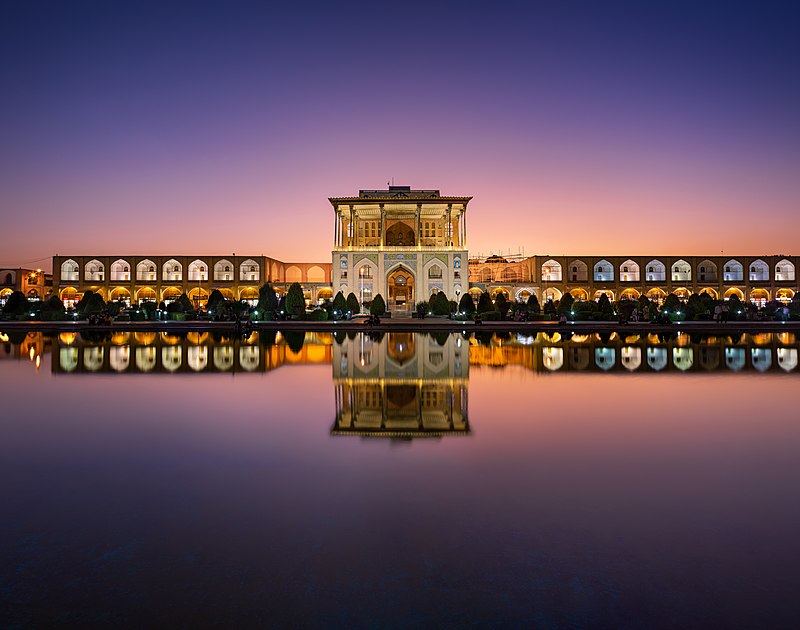 جاذبه : Ali Qapu Palace
جاذبه : Ali Qapu Palace
مشخصات جاذبه
جاذبه::Ali Qapu Palace
نام کشور::Iran
نام شهر::Isfahan
نوع جاذبه ::Ancient and Historical
نوع جاذبه فرعی:: Historical
آدرس:: Across Sheikh Lotfollah mosque, Naqsh-e Jahan square, Isfahan, Iran
زمان بازدید:: 09:00:00
بلیط:: 30000
بلیط خارجی:: 200.000
توضیحات:: In the west of Naghsh-e Jahan Square and across from Sheikh Lotf Allah Mosque, there is a mansion which is one of the most important architectural masterpieces of early 11th century AH with an excellent worldwide reputation. Considering the investigations, it is deduced that Ali Qapu Palace is the central gate and entrance of all palaces which were constructed in Naghsh-e Jahan Square in Safavid period. This palace, which is an exclusive example of Safavid palaces architecture, was built in early 11th century AH (between 1225 and 1231 AD) at the instigation of Shah Abbas the First in Isfahan after the transfer of capital from Qazvin to Isfahan. It used to host great men. It is Ali Qapu’s miniatures by Reza Abbasi, well-known artist of Safavid time, which has caused the palace to be placed among Safavid magnificent monuments; moreover, skillful stucco of the last floor of the palace whose hall is known as “Music Room” or “Sound Room” has enhanced the beauty of Ali Qapu Palace. The stucco not only regulates the sound but also stops its reflection. This monument was registered in Iran’s National Heritage in 1931 under the registration number of 104.
کلیات
جاذبه::Ali Qapu Palace
وجه تسمیه::It means High (or Great) Gate in Turkish. Is a building which actually was the enterance gate of the Sfavid Dowlatkhaneh.
سازنده ::Was built under the order of the Safavid Shah Abbas I.
ویژگی خاص:: Sound Hall, unique paintings of ustad Reza Abbasi
امکانات
پیشنهادات
جاذبه::Ali Qapu Palace
بهترین زمان بازدید::Spring until late fall
نزدیک ترین جاذبه گردشگری:: Chehel Sotun palace, Hasht Behesht, museum of decorative arts, Shaykh Bahai hammam, Chahar Bagh school
پیشنهاد ویژه:: From the third to the ninth of Ordibehesht and during the New Year ,the municipality of Isfahan establishes free tours.
مسیر دسترسی
جاذبه::Ali Qapu Palace
آدرس::Across Sheikh Lotfollah mosque, Naqsh-e Jahan square, Isfahan, Iran
نحوه دسترسی::Taxi, bus
تلفن:: ۲۲۲۲۱۷۳-۰۳۱
عکس

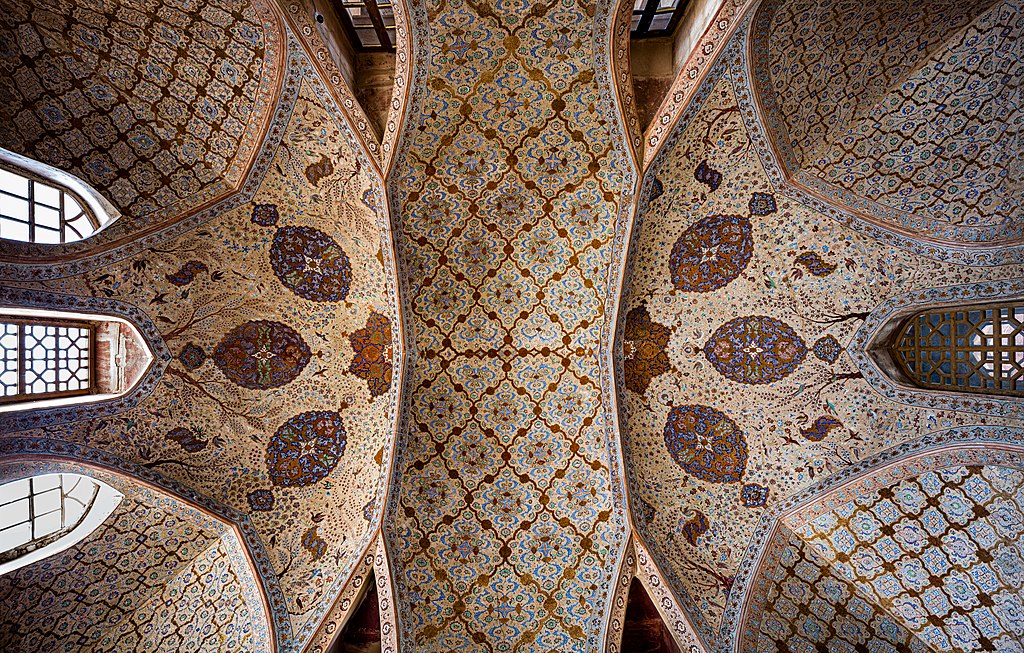
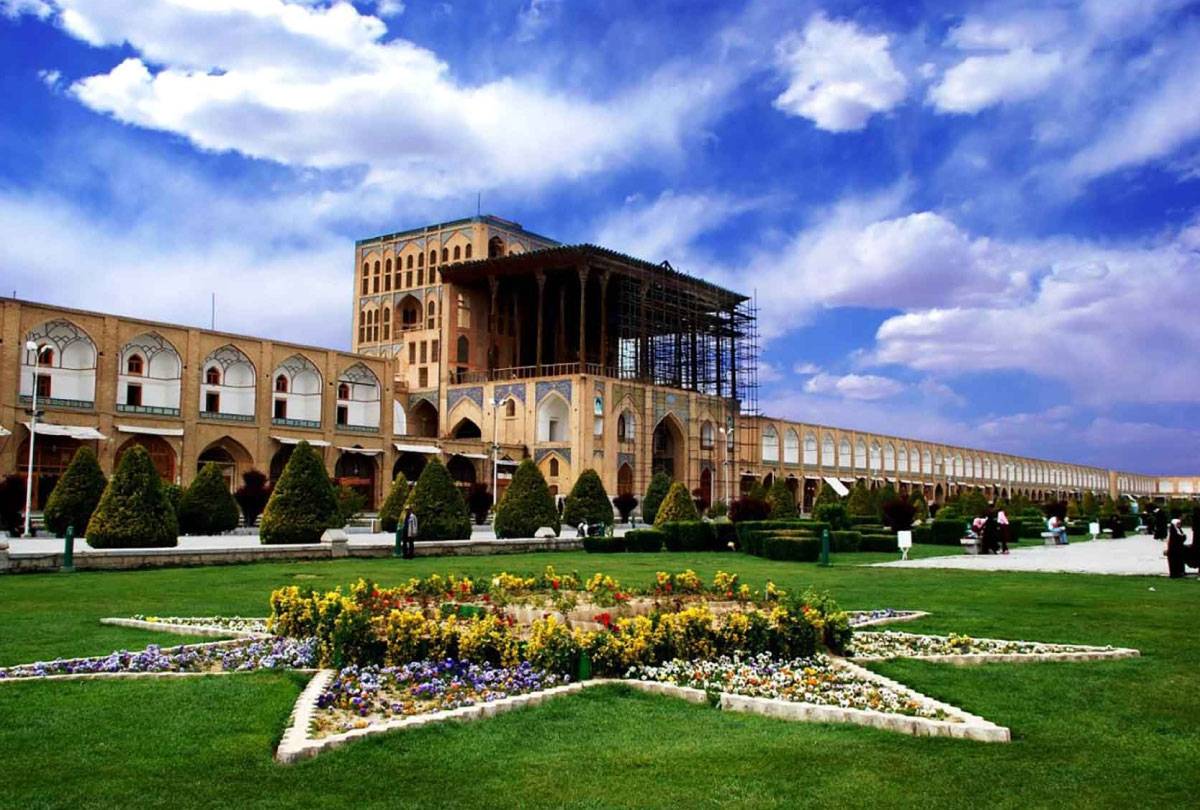
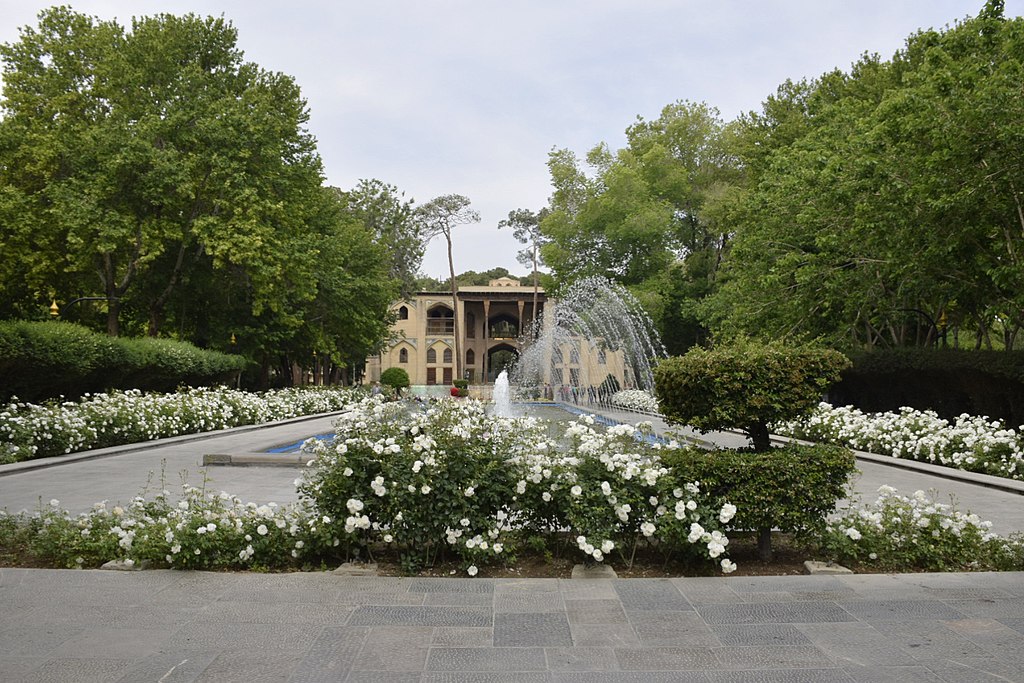 جاذبه : Hasht Behesht Palace
جاذبه : Hasht Behesht Palace
مشخصات جاذبه
جاذبه::Hasht Behesht Palace
نام کشور::Iran
نام شهر::Isfahan
نوع جاذبه ::Ancient and Historical
نوع جاذبه فرعی:: Historical
آدرس:: Shahid Rajayi park, Goldaste street, Isfahan, Iran
زمان بازدید:: 00:00:00
تعطیلی هفته:: ندارد
تعطیلی سالیانه:: روزهای تاسوعا و عاشورای حسینی، ۲۱ رمضان شهادت امام علی، ۲۸ صفر رحلت پیامبر، ۱۴ خرداد رحلت امام خمینی، ۲۵ شوال شهادت امام جعفر صادق
بلیط:: 40.000
بلیط خارجی:: 300.000
توضیحات:: The historical mansion of “Hasht Behesht” (meaning Eight Heavens) is an example of palaces of the last Safavid kings that was built during Shah Soleiman era in 1080 hijri. Tiles with pictures of different animals, birds, wild animals and reptiles are countless monuments of this palace. Not much of the vast garden of “Hasht Behesht” has remained. However, the historical palace of it is still a precious and interesting monument and a park is built around it after the revolution. It is found by the numerous reports describing this palace that the reason for its popularity is the use of perfect marbles in it and having mogharnas and painted archs. The palace building has two floors and throne room, beautiful passageways, various golden designs and interesting decorations, unique tile backsides, paintings of animals and birds and outstanding mirror works. It is in fact one of the outstanding palaces of Safavid era. The aforementioned palace which is also called Bolbol Garden (meaning Nightingale Garden) was a part of Naghsh-e Jahan Garden at Shah Abbas time and it was separated and began to be built in Shah Abbas time (1078-1105). Hasht Behesht Palace was one of the sumptuous monuments of its time that was appreciated by European tourists.
کلیات
جاذبه::Hasht Behesht Palace
سبک معماری:: Isfahani style
ویژگی خاص:: There was a time when it was called the most beautiful place in theworld.
امکانات
پیشنهادات
جاذبه::Hasht Behesht Palace
بهترین زمان بازدید::Spring
مدت زمان بازدید::01:00
آثار و نمونه های مشابه:: Chehelsotun palace
نزدیک ترین جاذبه گردشگری:: Chaharbagh School, Chehelsotun palace, Ashraf hall, Ali Qapu, Si-o-seh pol, Museum of Decorative Arts in Rakib house.
مسیر دسترسی
جاذبه::Hasht Behesht Palace
آدرس::Shahid Rajayi park, Goldaste street, Isfahan, Iran
تلفن:: 03132225958
عکس

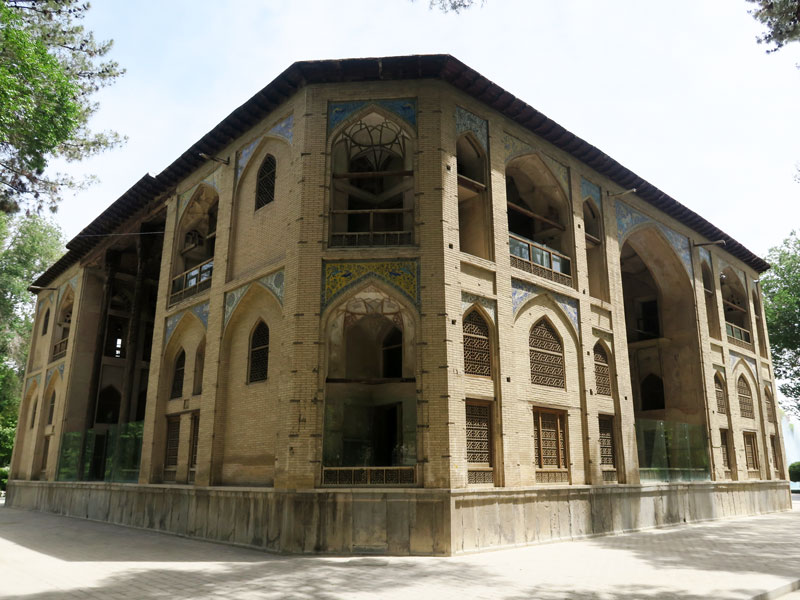
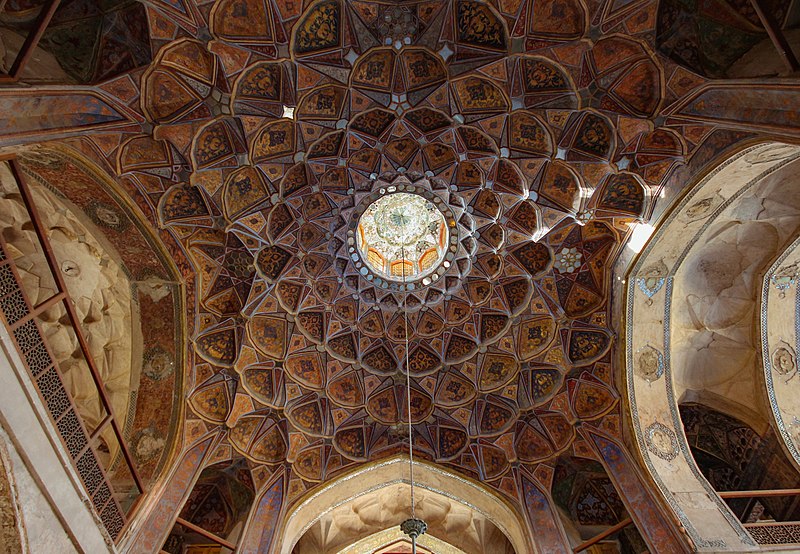
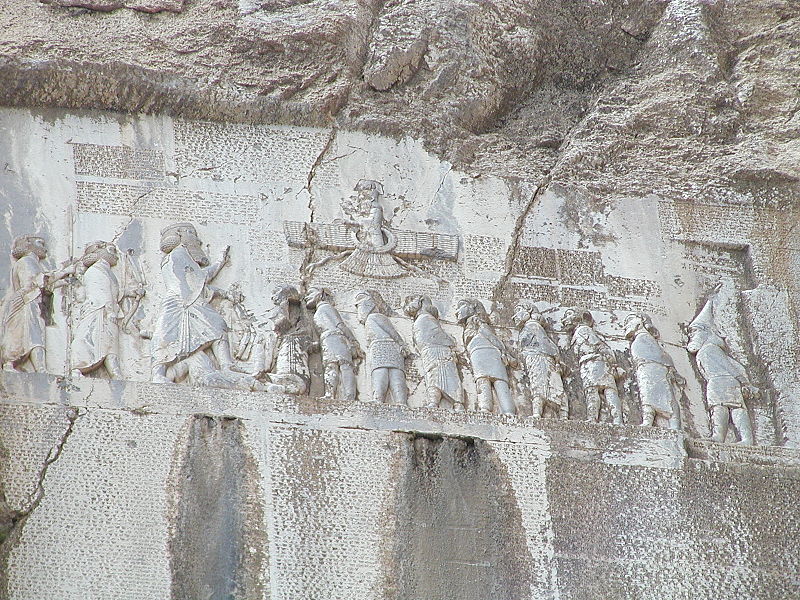 جاذبه : Bisotun Inscription
جاذبه : Bisotun Inscription
مشخصات جاذبه
جاذبه::Bisotun Inscription
نام کشور::Iran
نام شهر::Kermanshah
نوع جاذبه ::Ancient and Historical
نوع جاذبه فرعی:: Historical
آدرس:: Upon Behistun mountain, 30 kilometers east of Kermanshah city, Behistun city of the Harsin county, Kermanshah province, Iran
زمان بازدید:: 08:00:00
تعطیلی هفته:: ندارد
توضیحات:: Bisotun Inscription is the greatest inscription in the world, the first known Iranian text and a relief from Achaemenid era (520 years BC.) located in Bistoon City, a suburb of Harsin City, 30 kilometers from Kermanshah and on the outskirts of Bistoon Mountain. Bistoon Inscription is one of the most important and famous historical documents of the world during the Achaemenid that is a description of the victory of Darius the great over Gaumata and enslavement of rebels. Major points of Bistoon inscription include: introduction of Darius in his own words, Achaemenid dynasty, restoration of monarchy to Archaemenid, Darius’s governance, death of Cambyses, Gaumata rebellion and his death, rebellion in many lands and their repression, restoration of lands that had refused submission, Darius’s nineteen war victories such as the important and difficult victory over Scythians, establishment of peace and safety in the vast empire, rejection of anti—government outlaw’ claims, warning against lying, defending truth and honesty, praying for the country and its nation, Darius’s thank to Ahouramazda for his help in overcoming opponents and retrieving peace, advice to future kings who will read Bistoon inscription, name of those who supported Darius overcome Gaumata and reference to the publication of inscription throughout the Archeemenid territory in cuneiform and in three languages of Persian, Babylonian and Elamite.
کلیات
جاذبه::Bisotun Inscription
وجه تسمیه::The name Behistun is from the ancient persian word " Boghestan" which means the place of the gods.
سازنده ::Darius
ویژگی خاص:: The most important inscription of Iran and the world's largest inscription.
امکانات
پیشنهادات
جاذبه::Bisotun Inscription
بخش های مهم برای بازدید:: Behistun Inscription, Statue of Hercules
نزدیک ترین جاذبه گردشگری:: Statue of Hercules, Shah Abbasi Caravanserai
مسیر دسترسی
جاذبه::Bisotun Inscription
آدرس::Upon Behistun mountain, 30 kilometers east of Kermanshah city, Behistun city of the Harsin county, Kermanshah province, Iran
عکس

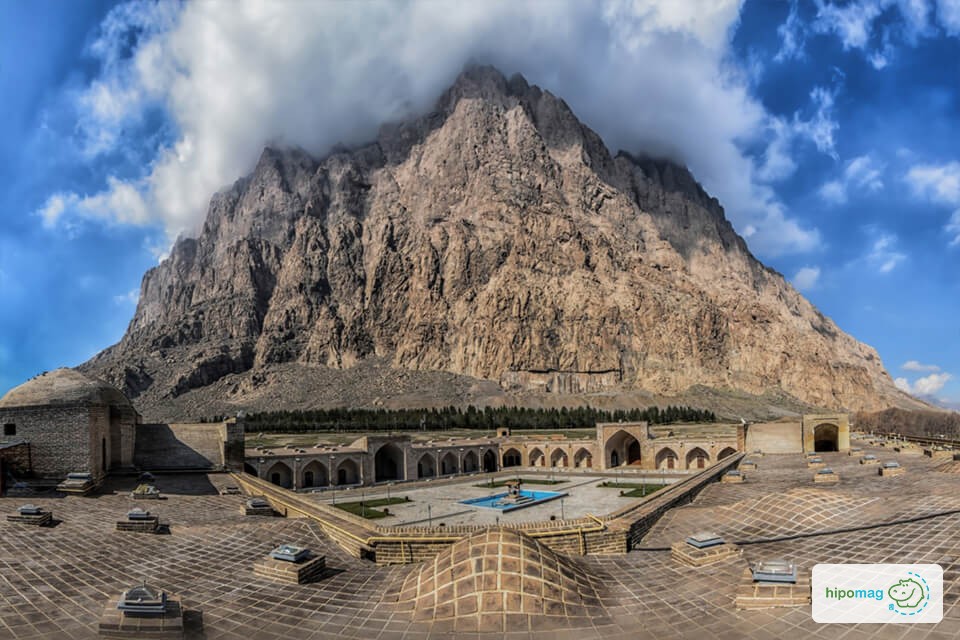
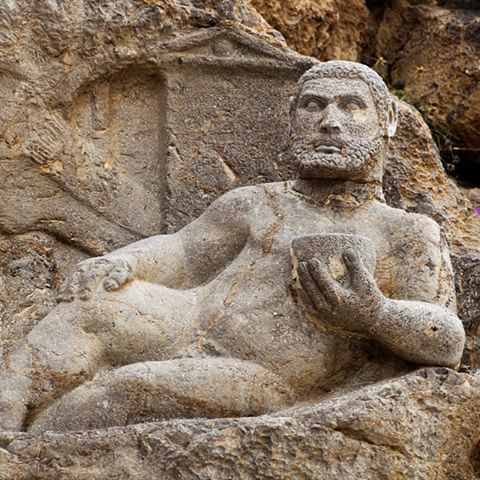
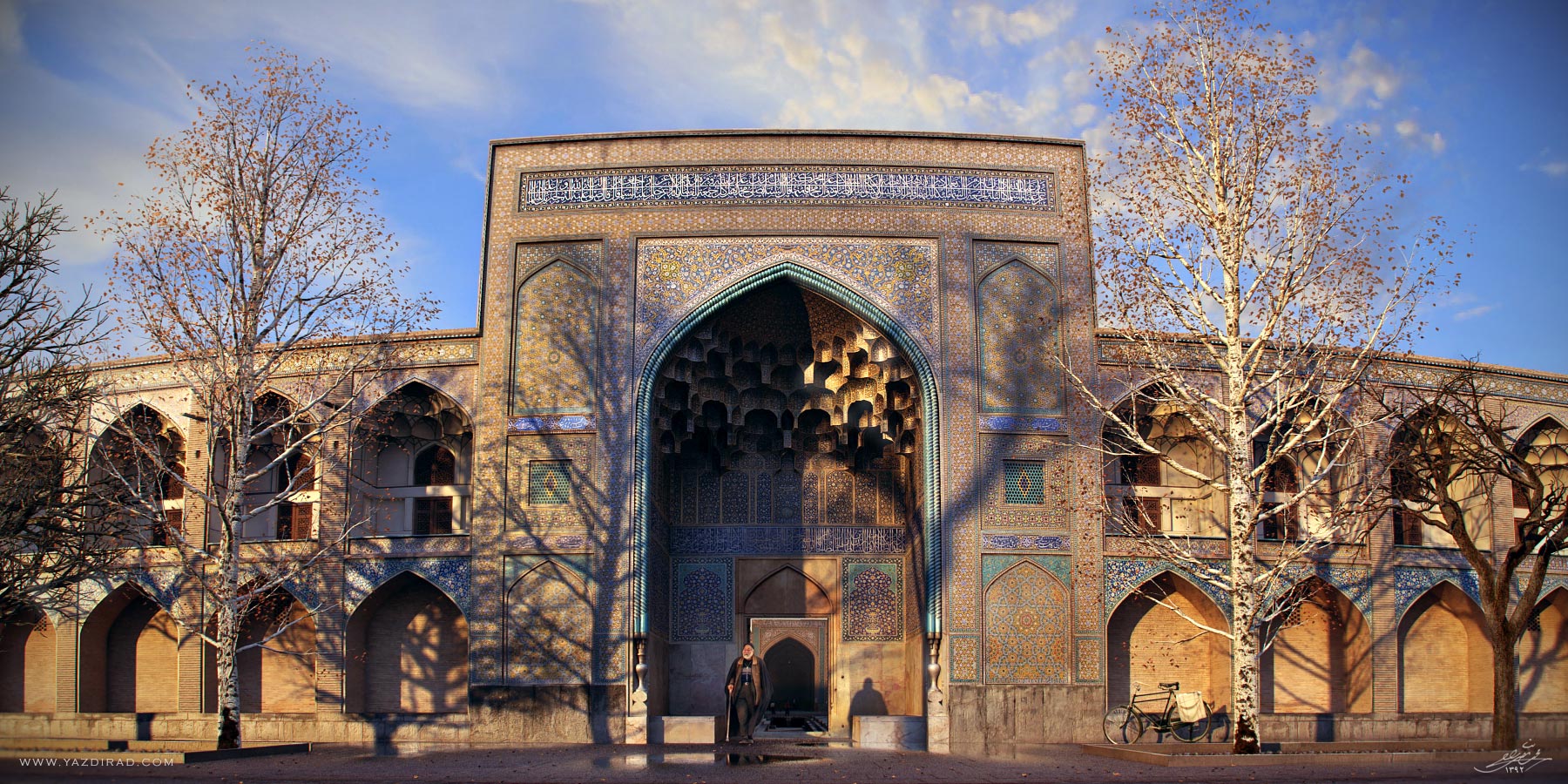 جاذبه : Chaharbagh School
جاذبه : Chaharbagh School
مشخصات جاذبه
جاذبه::Chaharbagh School
نام کشور::Iran
نام شهر::Isfahan
نوع جاذبه ::Ancient and Historical
نوع جاذبه فرعی:: Historical
زمان بازدید:: 00:00:00
توضیحات:: Chaharbagh School which is also called Soltani School and Madar Shah School is the last glamorous historical monument of Safavid reign in Isfahan that was built in 1116-1126 hijri to teach and train religious students in Shah Sultan Hussein period, the last Safavid king. Chaharbagh School that according to some people has been a school and a mosque at the same time is located in the eastern side of Chaharbagh Street with an area of 8500 square meters. In terms of architectural fitness and beauty of tilings, the dome of Chaharbagh Schoolis rated second after Sheikh Lotf al-Allah Mosque. However, in experts’ idea, the luxurious gate of this building which is ornated by gold and silver is a masterpiece in fine industries and is a unique structure in terms of goldsmith, gilding, design and etching. Chaharbagh School is also significant in terms of tilings and includes different types of this art such as seven colored tiling, sudoriferous, Chinese knot, pillay and magheli and is in fact the tiling museum in Isfahan. This place is the tile collection in Iran. The integrated marble altar and pulpit, especial chamber of Suktan Hussain King, unique tiling of the school entry, nastaliq calligraphy on the inscriptions and wooden carved windows are the very interesting and spectacular parts of this precious historical monument. The architecture of Chaharbagh School is in Isfahanian Style.the peak of education in this school was at Safavid era and after that time it took a descending path
کلیات
جاذبه::Chaharbagh School
وجه تسمیه::It's known as Sultani because it was built during the time of Shah Sultan Hossein and it's named Chaharbagh because it's located at Chaharbagh street.
سازنده ::It was built during the time of Shah Sultan Hossein the last Safavid ruler.
سبک معماری:: Isfahani style
ویژگی خاص:: Nowhere in Isfahan has attracted foreign tourists and visitors as much as the Chaharbagh School has.
امکانات
پیشنهادات
مسیر دسترسی
جاذبه::Chaharbagh School
عکس

